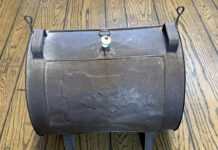The adage “keep the best and sell the rest” is always an important principal in managing a dairy farm, but with the high costs of feed and other inputs, following this principle is a must.
The act of “culling” animals from the herd usually has a negative connotation because all too often this activity is associated only with removal of unhealthy or low productive cows. However, culling refers to selectively choosing which animals are going to be leaving the farm, whatever the reason.
Reasons
Cows may be leaving the farm because of low milk production, poor reproduction, health, or for dairy purposes. Some heifers may need to the selectively removed from the herd because there are more replacement animals on the farm than needed, and of course, most bull calves leave after a few days of age.
Within record systems, animals “left” herd also includes those having died, which is not a selective method of animal removal from the herd.
Monitoring the reasons animals are leaving the herd and the number of replacement animals needed for the farm is very important for farm profitability. Among the 685 DHI herds in Ohio, about 38 percent of the cows leave the herd each year. About half of the cows removed from the herd are in the third or greater lactation.
Observing cull rate of cows in first, second or third and greater lactations can be informative of potential problems based on the ways animals are grouped or managed. Less than a 30 percent removal of cows is usually reflective of a herd that is purposefully expanding and/or that too many unproductive cows are remaining in the herd. When more than 35 percent of the cows are leaving the herd each year, then attention really needs to be directed to why the cows are leaving.
Report
In the 2002 report (2001 data) by the National Animal Health Monitoring System, 26.9, 26.5, 19.3, and 16.3 percent of the cows were culled for udder/mastitis problems, reproduction problems, low milk yield or lameness/injury, respectively. Within the past 10 years, the proportion of cows leaving the herd for lameness has increased.
Of course if a herd is voluntarily removing animals to reduce herd size, then a high cull rate may not be reflective of a problem. With culling for low milk, which occurred first, the low milk yield or the health problem that led to decreased milk yield?
Generally, the proportion of the herd leaving is accurate information, but the reason for departure can be suspect, depending on the accuracy of the farm’s record keeping system.
Red flag
When cows are leaving the herd within the lactation also is important. A high percentage of cows leaving within the first 60 days-in-milk is reflective of problems in transitioning cows from the dry period into lactation.
This may be a nutritional problem, but overstocking, mammary health and other aspects may be causing this involuntary removal of cows. This period of time is when income over feed costs are the highest, so not only is a high cull rate during early lactation a concern, but it also reflects that a lot of other cows remaining in the herd are not likely performing to their potential.
Deaths
About 5 percent of the cows die on the farm each year. Less than 10 percent of the calves born alive should die prior to weaning, and the death rate of heifers from weaning to calving should be very low, about 2 percent. Digestive and respiratory problems account for most of the causes of the death of unweaned heifers. High death rates within any animal group necessitates comprehensive attention.
Although exceptions exist for high genetics herds, only about 5 percent of the animals generally depart from a dairy farm for breeding purposes. However, with improved management and use of sexed semen, many farms are holding large inventories of heifers on the farm, sometimes 125 percent or greater of number of cows.
At a 30 percent to 35 percent cull rate, only about 85 heifers per 100 cows should be held on the farm. With high feed costs and limited forage in many situations this year, now is the time to sell excess heifers.
High involuntarily culling reflects problems within the herd that need attention. Making the conscious decision to voluntarily select unproductive (based on being unprofitable, e.g. a break-even milk yield or action level for income over feed costs need to be established for the herd) or unneeded animals may make the difference of whether the herd is profitable, or not, during these times of high costs of production.












